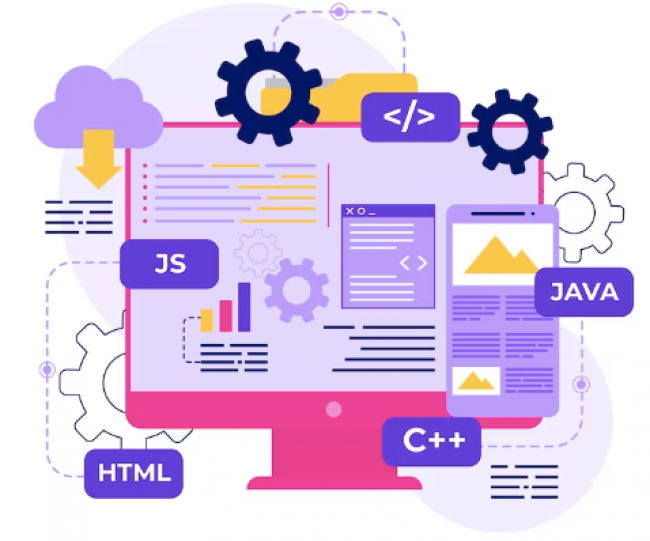
Jump statements are a type of control flow mechanism used in programming languages to transfer control from one part of a program to another. Jump statement in c provides a convenient way to change the flow of execution, making it possible to skip over certain parts of a program or to return values to the caller. Jump statements come in several forms, including goto, break, continue, and return statements.
Jump statements are statements in programming languages that allow a programmer to change the flow of control in a program. Jump statement in java is used to transfer control from one part of a program to another. There are several types of jump statements, including:
Goto:
A goto statement allows a programmer to transfer control to another part of the program identified by a label.
The goto statement is a type of jump statement in programming that allows a programmer to transfer control to another part of the program identified by a label. When a goto statement is executed, control is transferred to the statement with the specified label.
The use of goto statements is generally discouraged in modern programming because they can make code more difficult to read, understand, and maintain. This is because goto statements can cause code to jump from one part of a program to another in an unpredictable manner, which can make it difficult to follow the flow of execution.
Instead of using goto statements, modern programming languages provide other control structures, such as loops, if-else statements, and function calls, that allow for a more structured and predictable control flow. These control structures allow for more maintainable code that is easier to read and understand.
Break:
A break statement allows a programmer to exit a loop or switch statement. The break statement is a type of jump statement in c that allows a programmer to exit a loop or switch statement. When a break statement is executed within a loop or switch statement, control is immediately transferred outside of the loop or switch statement.
For example, if a programmer is using a loop to iterate through a list of items, they might want to use a break statement to exit the loop early if a certain condition is met. By using a break statement, the programmer can cause the loop to exit before it has finished iterating through all of the items in the list.
Similarly, in a switch statement, a break statement can be used to exit the switch statement after a matching case has been found and executed.
The use of break statements can make code more concise and easier to understand by allowing a programmer to exit a loop or switch statement when a certain condition is met, rather than having to continue executing the loop or switch statement to its completion.
Continue:
A continue statement allows a programmer to skip the remainder of the current iteration of a loop and move on to the next iteration. The continue statement is a type of java jump statement that allows a programmer to skip the remainder of the current iteration of a loop and move on to the next iteration. When a continue statement is executed within a loop, control is immediately transferred to the next iteration of the loop, bypassing any remaining code in the current iteration.
For example, if a programmer is using a loop to iterate through a list of items, they might want to use a continue statement to skip certain items based on certain conditions. By using a continue statement, the programmer can cause the current iteration to be skipped, and move on to the next iteration of the loop.
The use of continue statements can make code more concise and easier to understand by allowing a programmer to skip certain iterations of a loop based on certain conditions, rather than having to include conditional statements within the body of the loop.
Return:
A return statement allows a programmer to return a value from a function and exit the function. The return statement is a type of jump statement in programming that allows a programmer to return a value from a function and exit the function. When a return statement is executed within a function, control is immediately transferred back to the calling function, and the specified value is returned to the caller.
For example, if a programmer is writing a function to perform a calculation, they might want to use a return statement to return the result of the calculation to the caller. By using a return statement, the programmer can cause the function to exit and return the result to the caller, without having to continue executing the rest of the function.
The use of return statements is essential in many programming languages, as they allow a function to return a value to the caller, which can then be used in other parts of the program. This makes it possible to write reusable functions that can be called from multiple places in a program, making code more modular and easier to maintain.
Jump statements are supported in several programming languages, including:
- C and C++
- Java
- Python
- JavaScript
- PHP
- Ruby
- Swift
- Assembly
However, the specific syntax and usage of jump statements can vary between languages. It's also worth noting that some programming languages, such as Python, do not support the goto statement. In general, it's recommended to use jump statements sparingly, as they can make code more difficult to understand and maintain.
Jump statements are an important part of many programming languages, providing a convenient way to control the flow of execution. While they can be powerful tools, it's important to use them wisely, as they can also make code more difficult to read and understand. Modern programming languages provide alternative control structures, such as loops, if-else statements, and function calls, that allow for a more structured and predictable control flow. By using these alternatives and using jump statements sparingly, programmers can write code that is easy to understand, maintain, and debug.
















